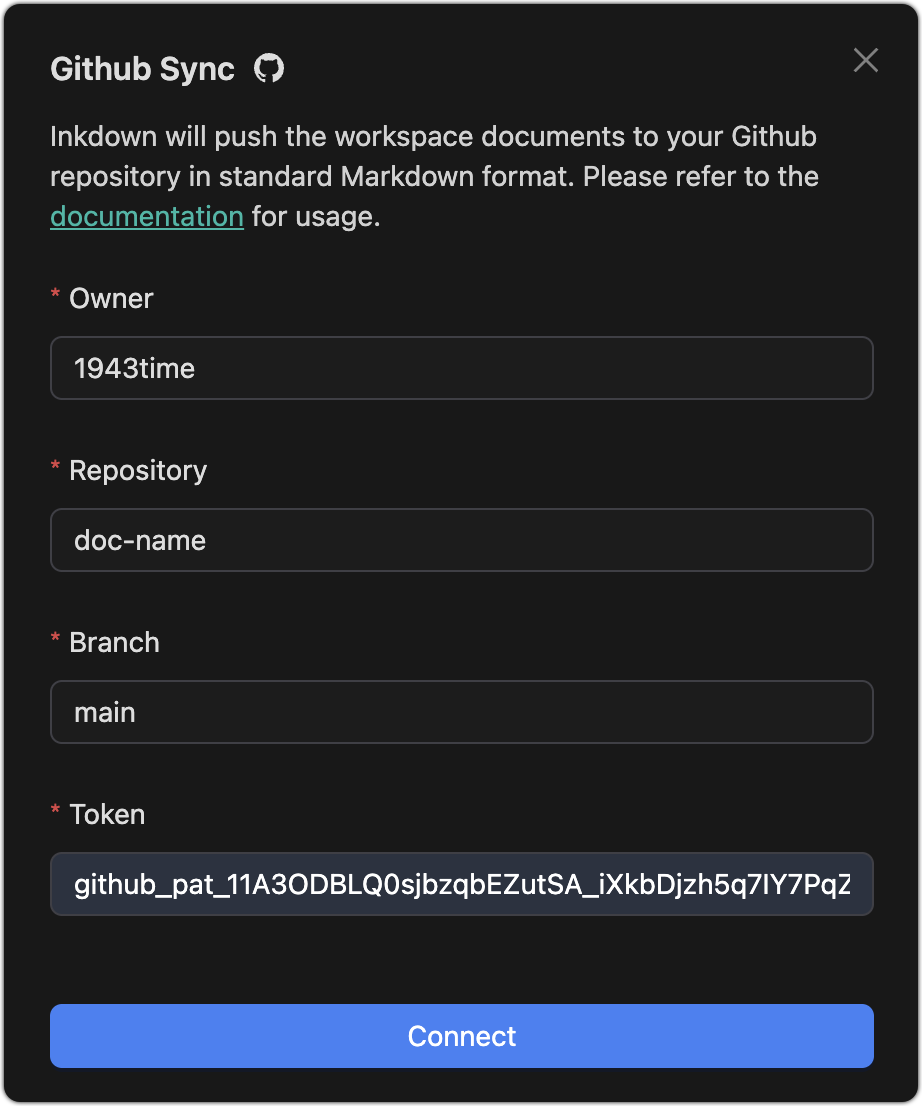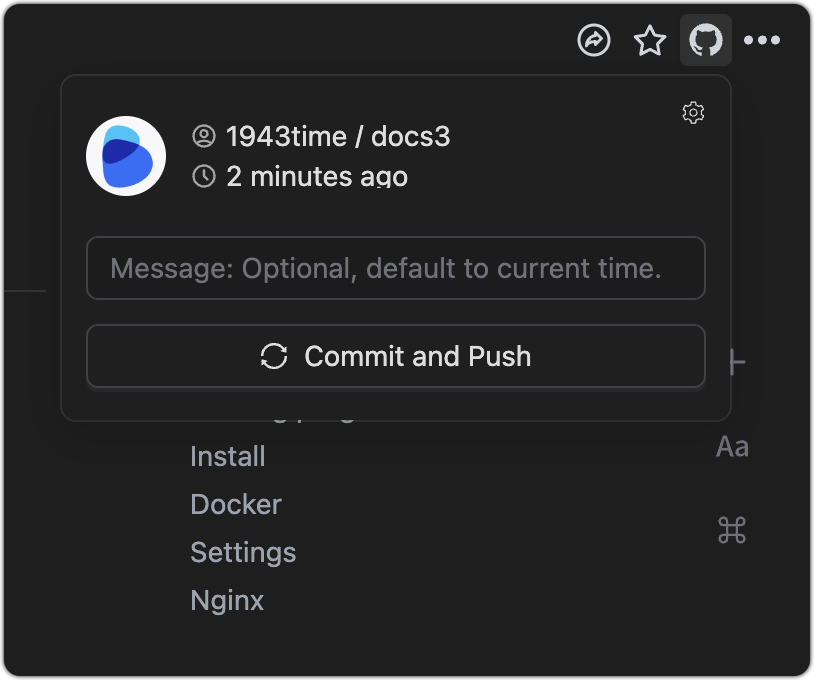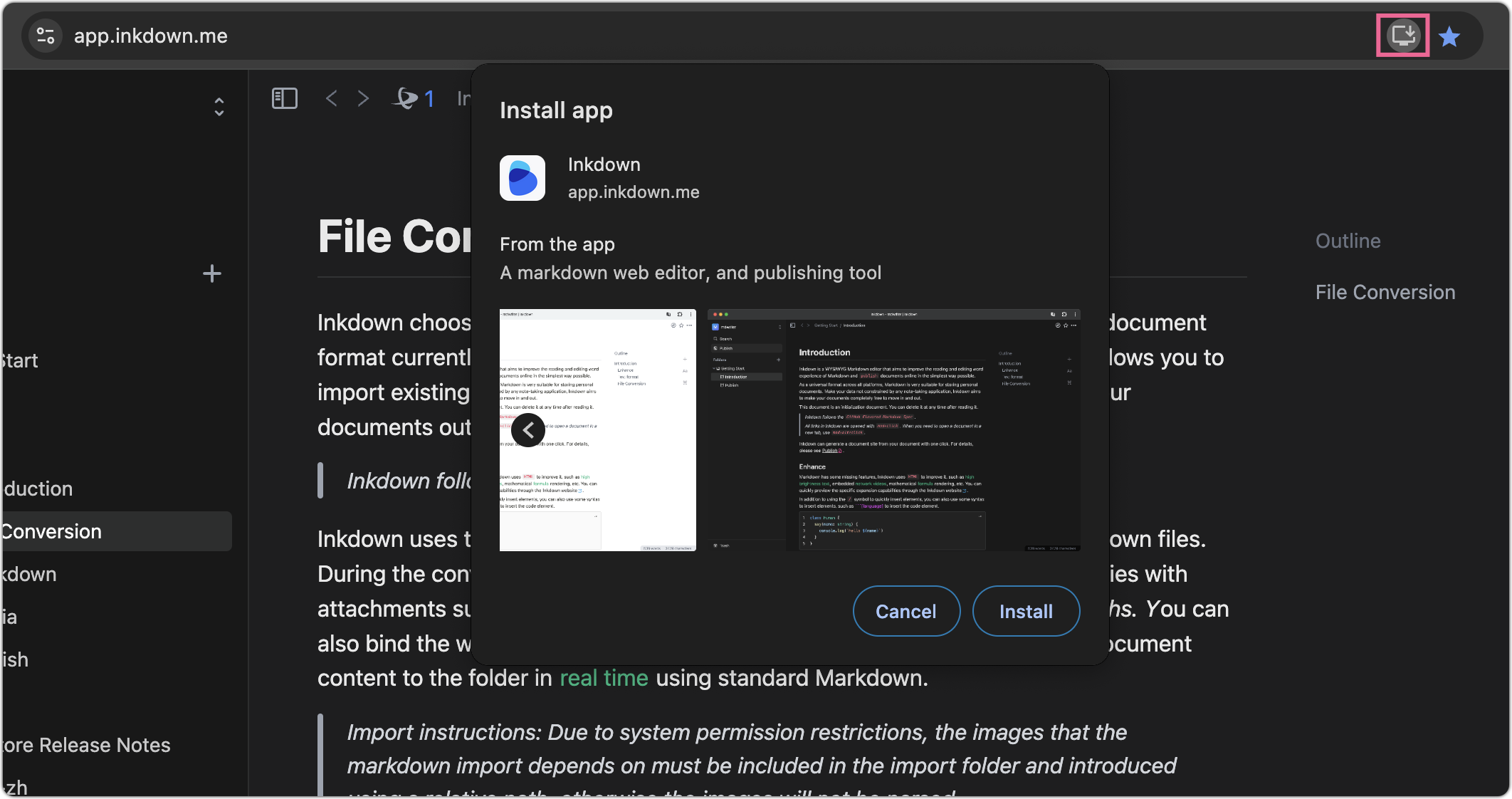File Conversion
Inkdown chooses Markdown files as its host because it is the most common document format currently and is supported by almost all mainstream platforms. This allows you to import existing documents into Inkdown with one click, or you can migrate your documents out at any time, depending on your usage habits.
Inkdown uses the browser's file system to batch import or export local Markdown files. During the conversion process, Inkdown will automatically handle dependencies with attachments such as images and change their reference paths to relative paths. You can also bind the workspace to a local folder, and Inkdown will synchronize the document content to the folder in real time using standard Markdown.
Import instructions: Due to system permission restrictions, the images that the markdown import depends on must be included in the import folder and introduced using a relative path, otherwise the images will not be parsed.
Inkdown's data conversion process is as follows:
Because the data is cached by the browser database, Inkdown does not feel any delay during the editing process. Just like stand-alone software, Inkdown uses PWA technology, which allows Inkdown to be installed on the desktop and even run offline. When your network is restored, Inkdown will automatically synchronize the document content.
Paste content
By default, when you paste content into the editor, Inkdown will treat it as HTML and convert it to a format that inkdown can use.
But you can use the shortcut mod+shift+v to paste plain text, Inkdown will ignore the format in HTML, You can also paste the markdown code directly, use mod+option+v, Inkdown will parse the markdown content and insert it.
Push to Github
In addition to being able to export content with one click or synchronize it to your local machine in real time, Inkdown also supports pushing space documents to GitHub in standard markdown format, including the media files attached to them. GitHub has a clear change record. You can roll back to any commit record and view historical changes.
GitHub is the world's largest code repository hosting platform. GitHub has almost no restrictions on the number of your private repositories, but the maximum storage of each repository cannot exceed
1GB, which is sufficient for regular document storage.In order not to occupy repository space, Inkdown only uploads media files under
5mb.
The usage process is as follows:
Go to your GitHub homepage.
click on the avatar in the upper right corner.
select Your repositories.
Click the New button -> Fill in the name and select private, then create the repository.
click on the avatar in the upper right corner.
Select Settings-> Developer settings -> Personal access tokens -> Fine-grained tokens -> Generate new token.
Enter the token name, Select Expiration as No expiration.
In Repository access, select Only select repositories, And select the repository you just created.
In the permissions, select the Contents option as Read and write.
Click Generate token to get the document repository token.
Now go into Inkdown and open the workspace you want to back up, Select Github Push from the menu in the upper right corner.

Enter the corresponding information and click Connect.
Wait for a while, the space document will be synchronized to GitHub. After the connection is successful, you can see the GitHub icon on the navigation bar.

Note: It is not recommended to push content to the document repository using methods other than Inkdown. Inkdown will not synchronize content uploaded by other methods to the workspace
When you want to synchronize the changes to GitHub, click Commit and Push again. message is optional. It represents the comment for this commit. By default, the current time will be used as the comment.
PWA
If you use the web version, you can install inkdown to your desktop through your browser.It will be basically the same as the desktop application experience.

As shown below

